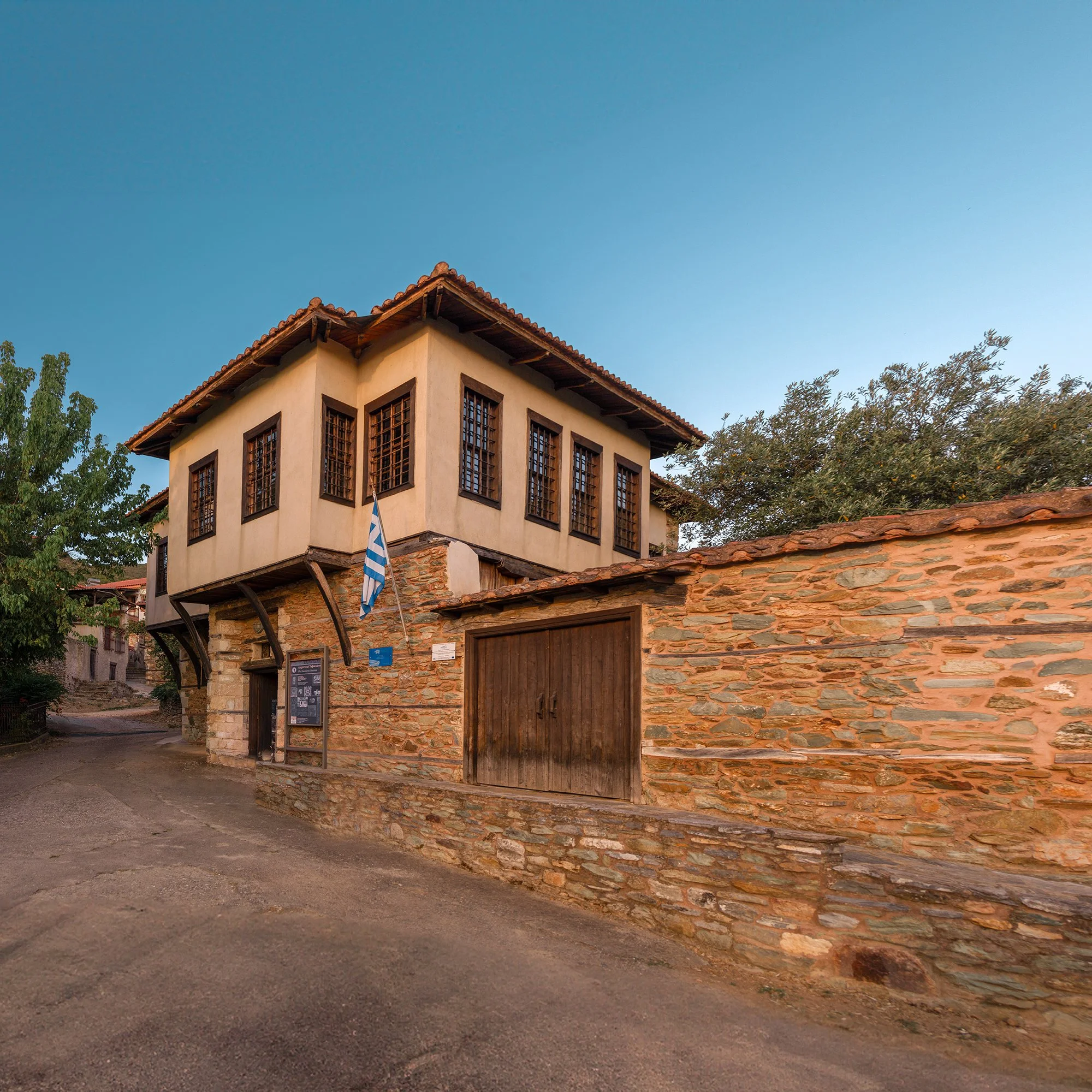Constellations Exploding Anew
Larissa Araz, Hera Büyüktaşcıyan, Alexis Fidetzis, Iz Oztat & Fatma Belkıs, Malvina Panagiotidi, Maria Varela
Curated by Eva Vaslamatzi
03.07–31.08.2024
Tavaniotis Mansion, Maroneia
When George Seferis visits Cappadocia in 1950, some three decades after he himself left as an immigrant from Vourla in Smyrna, his birthplace, he is impressed by the fragments of previous civilizations he found there. He visits the frescoes he finds in the cavernous churches, sensing the fragility of a place that has been a refuge for many cultures in times of war and persecution, recording his observations in the form of a diary.[1] Instead of focusing on the clash of cultures and hostilities, he seeks answers in the figures of the frescoes and in the figure of the popular craftsman[2] who captures 'with clumsiness, but also with all the coolness of spontaneous gesture' an authenticity that may have been lost in religious iconography through its gradual standardisation. The collective, and in his case personal, trauma creatively gives way to the observation of a source of human strength that points to the common root of existence outside of ethnic divisions.
How can the creativity found in these forms of spontaneous and symbolic production be translated into the present? Are folk art production and its echoes a vocabulary capable of incorporating historical and social resonances? Could folk art correspond to a sense of identity rooted in the primordial and the universal, as opposed to national identity?
The group exhibition Re-exploding Constellations traces the interactions and divergences between two cultures meeting within an existing geographic context, while extending beyond it through the narratives of the materials themselves and the connections proposed by the participating artists. Through six installation-artworks, the artists present their own interpretations drawing on the study of styles, traditional art forms, material and immaterial rituals, historical and anecdotal narratives.
The dual female figure with two identities wandering around Imbros in Larissa Araz’s photographs follows the visitor on their journey through the Tavaniotis Mansion, while Maria Varela symbolically translates the movement of populations of the Asia Minor Catastrophe, focusing on its framing and the techniques these refugees carried with them. Hera Büyüktaşçıyan works as a contemporary archaeologist by copying or highlighting historical aspects through different materialities, an opposite practice to that of Alexis Fidetzis, who re-creates contemporary findings and depictions based on recent unofficial narratives that challenge the image of each country. Finally, symbols associated with the struggle and conflict of locals from the Anatolian countryside against hydroelectric power plants are depicted in the works of Iz Oztat & Fatma Belkıs, while Malvina Panagiotidi highlights the fluidity of collective memory through the ‘clashes’ of living mythological systems as they appear in Canakkale ceramics, and their shifts over time.
[1] George Seferis, Three Days in the Monasteries of Cappadocia, 1953
[2] Seferis had written earlier, in 1947, about self-taught vernacular art on the occasion of the painter Theophilos. He admires his work thus: “Yet this wandering painter was consumed whole, like a true craftsman, in his creation. And the result of this is a pictorial event for Greece. I mean: an event that does not teach folklore, as we would be inclined to imagine, in looking at the ‘fustanelles,’ the ‘vlachs’ or the figures of popular iconostasis he represents, or even noticing his superficial technical weaknesses, his lack of ‘schooling’ or his ‘primitivism’, as they might say. But it is an event that teaches through painting, that aids and enlightens anyone with an adequate visual consciousness, even if they are schooled in the most renowned workshops of Europe.” Trials Volume One: 1936–1947, Icarus Publications, 1974.










